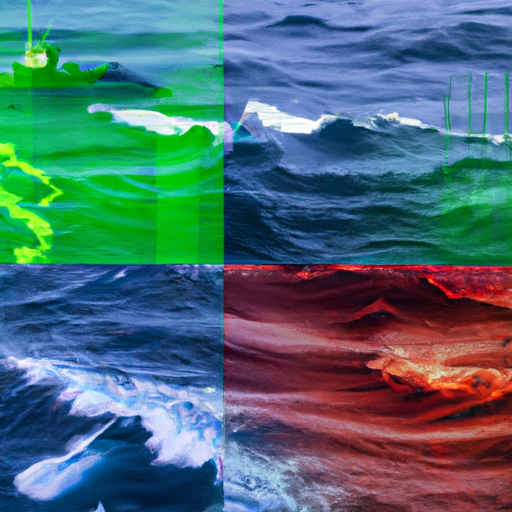Scientists detect unprecedented changes in Atlantic Ocean circulation patterns that could trigger dramatic climate shifts. Monitoring stations reveal concerning alterations in the Gulf Stream's behavior and strength. These changes could have far-reaching implications for global weather patterns and coastal communities.

Recent oceanographic data has revealed alarming changes in the Atlantic Ocean's circulation system, specifically the Atlantic Meridional Overturning Circulation (AMOC), suggesting we may be approaching a critical tipping point in Earth's climate system. This development has captured the attention of climate scientists worldwide and raises serious concerns about future global weather patterns and climate stability.
The AMOC, which includes the Gulf Stream, plays a crucial role in regulating global climate by transporting warm water from the tropics to the North Atlantic and cold water southward at depth. Recent measurements from an extensive network of ocean monitoring stations have detected significant weakening in this crucial system, with some areas showing up to a 15% reduction in flow strength compared to measurements from just a decade ago.
Researchers have identified multiple contributing factors to this disruption. The influx of freshwater from melting Greenland ice sheets has been particularly significant, introducing less dense water into the North Atlantic and potentially disrupting the delicate balance that drives the circulation. Rising ocean temperatures and changes in rainfall patterns have further complicated the system's behavior.
The implications of these changes are far-reaching and potentially severe. Historical records and climate models suggest that significant disruptions to the AMOC could lead to dramatic temperature changes across the Northern Hemisphere. European countries, in particular, could experience considerably colder winters, while tropical regions might face increased drought conditions.
Coastal communities worldwide are already observing the effects of these oceanic changes. Sea level rise along the eastern seaboard of North America has accelerated beyond previous projections, partly due to changes in ocean circulation patterns. Some coastal areas are experiencing more frequent flooding events, even on clear days, during high tides.
The impact on marine ecosystems has been equally concerning. Changes in water temperature and circulation patterns have begun affecting fish migration routes and breeding grounds. Commercial fishing industries in several regions have reported unusual shifts in fish population distributions, forcing them to adapt their operations.
Scientists are particularly concerned about potential feedback loops that could accelerate these changes. As ocean circulation patterns shift, they can trigger additional changes in temperature and salinity that further weaken the system. This possibility of self-reinforcing cycles makes the situation particularly urgent from a research and policy perspective.
The international scientific community has responded by expanding ocean monitoring efforts. New technologies, including autonomous underwater vehicles and satellite systems, are being deployed to gather more detailed data about ocean circulation patterns and their changes. This enhanced monitoring network aims to provide earlier warnings of significant shifts in the system.
Climate modeling teams are working to incorporate these new observations into their predictions of future climate scenarios. The results suggest that without immediate and substantial reductions in greenhouse gas emissions, the likelihood of a major AMOC disruption in this century has increased significantly compared to previous estimates.
The economic implications of these changes are substantial. Coastal infrastructure, agriculture, fishing industries, and tourism could all face significant impacts. Insurance companies and financial institutions are beginning to factor these risks into their long-term planning and risk assessments.
The situation has prompted calls for accelerated international action on climate change. While the Paris Agreement targets remain important benchmarks, some scientists argue that more aggressive measures may be necessary to prevent irreversible changes to ocean circulation patterns.
Adaptation strategies are being developed at various levels, from local coastal protection measures to international cooperative agreements. These include enhanced monitoring systems, improved early warning capabilities, and plans for protecting vulnerable coastal infrastructure and communities.
As research continues, scientists emphasize the need for both immediate action to reduce greenhouse gas emissions and preparation for potential changes that may already be inevitable. The situation serves as a stark reminder of the complex interconnections within Earth's climate system and the potentially far-reaching consequences of human-induced climate change.



